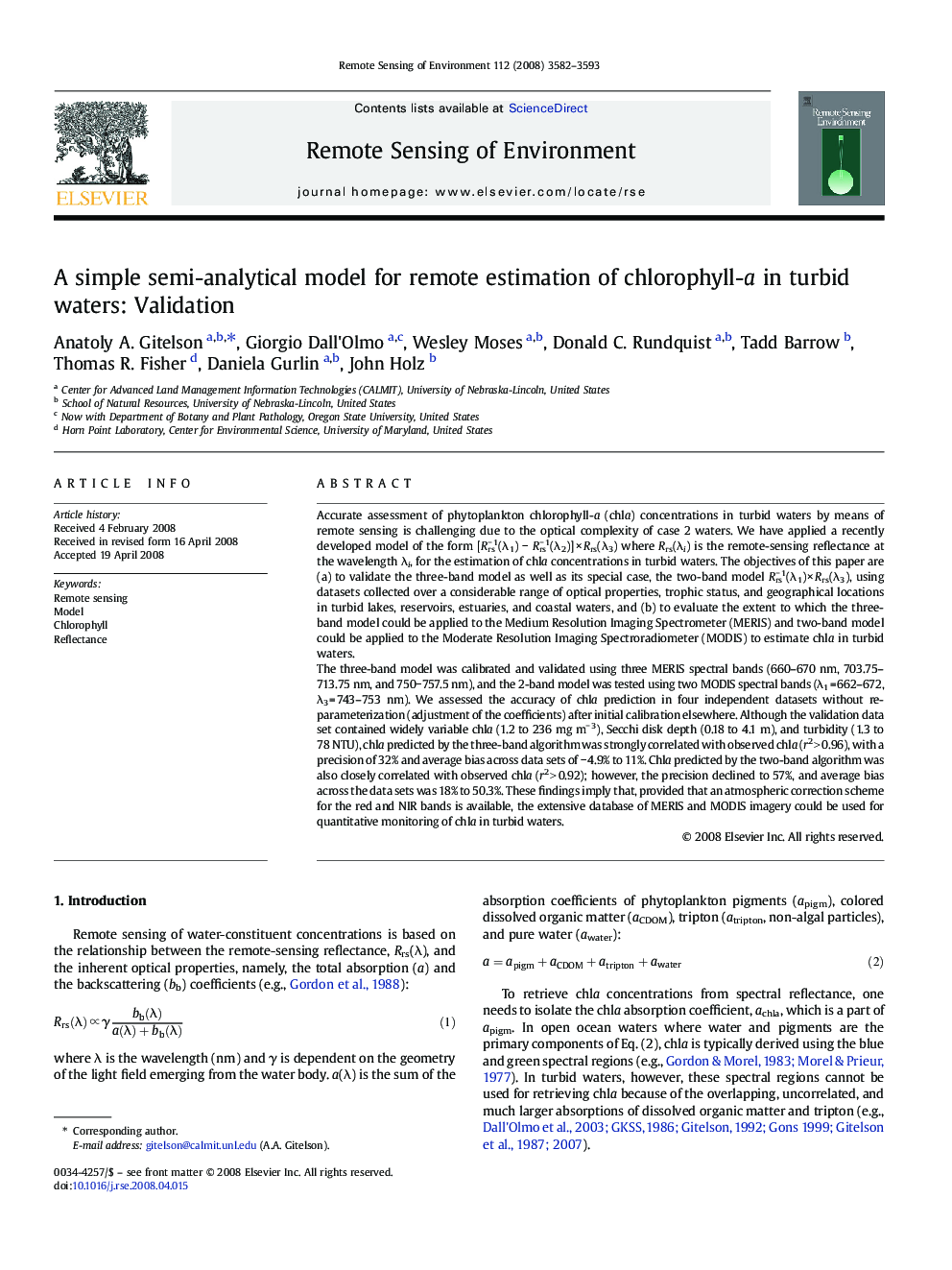| کد مقاله | کد نشریه | سال انتشار | مقاله انگلیسی | نسخه تمام متن |
|---|---|---|---|---|
| 4459908 | 1621325 | 2008 | 12 صفحه PDF | دانلود رایگان |

Accurate assessment of phytoplankton chlorophyll-a (chla) concentrations in turbid waters by means of remote sensing is challenging due to the optical complexity of case 2 waters. We have applied a recently developed model of the form [Rrs− 1(λ1) − Rrs− 1(λ2)] × Rrs(λ3) where Rrs(λi) is the remote-sensing reflectance at the wavelength λi, for the estimation of chla concentrations in turbid waters. The objectives of this paper are (a) to validate the three-band model as well as its special case, the two-band model Rrs− 1(λ1) × Rrs(λ3), using datasets collected over a considerable range of optical properties, trophic status, and geographical locations in turbid lakes, reservoirs, estuaries, and coastal waters, and (b) to evaluate the extent to which the three-band model could be applied to the Medium Resolution Imaging Spectrometer (MERIS) and two-band model could be applied to the Moderate Resolution Imaging Spectroradiometer (MODIS) to estimate chla in turbid waters.The three-band model was calibrated and validated using three MERIS spectral bands (660–670 nm, 703.75–713.75 nm, and 750−757.5 nm), and the 2-band model was tested using two MODIS spectral bands (λ1 = 662–672, λ3 = 743–753 nm). We assessed the accuracy of chla prediction in four independent datasets without re-parameterization (adjustment of the coefficients) after initial calibration elsewhere. Although the validation data set contained widely variable chla (1.2 to 236 mg m− 3), Secchi disk depth (0.18 to 4.1 m), and turbidity (1.3 to 78 NTU), chla predicted by the three-band algorithm was strongly correlated with observed chla (r2 > 0.96), with a precision of 32% and average bias across data sets of − 4.9% to 11%. Chla predicted by the two-band algorithm was also closely correlated with observed chla (r2 > 0.92); however, the precision declined to 57%, and average bias across the data sets was 18% to 50.3%. These findings imply that, provided that an atmospheric correction scheme for the red and NIR bands is available, the extensive database of MERIS and MODIS imagery could be used for quantitative monitoring of chla in turbid waters.
Journal: Remote Sensing of Environment - Volume 112, Issue 9, 15 September 2008, Pages 3582–3593